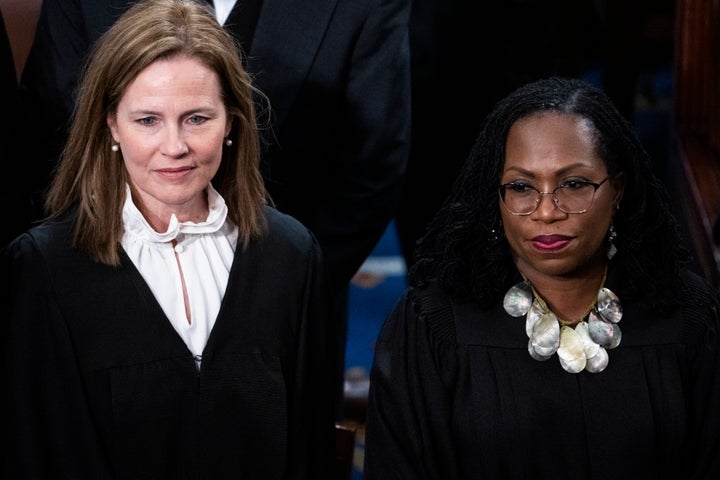The case seeking to eviscerate the Consumer Financial Protection Bureau and void all of its regulatory decisions finally arrived on Tuesday for arguments at the Supreme Court. And it did not go well for the payday lenders who brought the case.
Since its inception in 2010, the financial industry broadly, and payday lenders specifically, have sought to destroy the agency, which is charged with protecting consumers from predatory financial practices. In Community Financial Services Association of America v. CFPB, payday lenders zeroed in on the agency’s funding mechanism as their means to invalidate agency rulings negatively impacting the payday lending industry.
The payday lenders brought this case in response to a CFPB regulation prohibiting illegal debits from bank accounts. The ultimate goal, however, is to defang the agency and invalidate its regulatory actions, including billions of dollars in fines levied against payday lenders and other financial companies since its inception.
Payday lenders have tried this before in the 2020 case of Seila Law v. CFPB, when they challenged the constitutionality of the provision protecting the agency’s director from being removed by the president. In that case, the court agreed 5-4 that the director’s insulation from dismissal for cause was unconstitutional, but declined to invalidate all of the agency’s prior actions. Now, they are back again with a different constitutional argument to fulfill the same goal.
When Congress created the CFPB, it placed it within the Federal Reserve and stated that it could draw funds of up to $600 million (subject to adjustments for inflation) from the Federal Reserve treasury, which is raised from payments made by regional reserve banks. In this week’s case, the payday lenders argue that Congress’ decision to fund the agency with non-annual appropriations raised by the Federal Reserve was unconstitutional under the Constitution’s Appropriations Clause and violated the separation of powers. The case came before the court following the Fifth Circuit Court of Appeals’ ruling that the agency’s funding is unconstitutional and all of its regulatory actions void.
The problem, as the government and numerous justices argued, is that this argument flies in the face of Congress’ history of funding agencies in a similar fashion, the text of the Constitution’s Appropriations Clause, and past court precedent.
Bill Clark via Getty Images
At the nation’s founding, Congress created agencies like the Customs Service, the Post Office and revenue officers that were funded through non-annual, standing appropriations in much the same manner as the CFPB, Solicitor General Elizabeth Prelogar, representing the agency, argued in its defense. Since then, she added, Congress has authorized such funding arrangements hundreds of times, including for the entirety of the federal financial regulatory system.
“The CFPB appropriations fits squarely within this unbroken line of congressional practice,” Prelogar said.
This history of congressional practice is because the Appropriations Clause does not state that Congress must only fund agencies through annual appropriations or with funding capped at specific levels. On the other hand, the Constitution does provide such an instruction for funding the Army, indicating the lack of a specific limit in the Appropriations Clause is meant to allow Congress to exercise its own judgment on how to make appropriations.
Noel Francisco, the former solicitor general under President Donald Trump and the lawyer for the payday lenders, disagreed, offering a shifting and convoluted argument claiming the Appropriations Clause contains a hidden requirement that Congress not delegate authority related to funding to the executive branch ― which would be a violation of the separation of powers doctrine. This supposed requirement would prohibit Congress providing “perpetual funding” to an executive branch agency of a non-fixed amount.
But as the three liberal justices and even conservatives Brett Kavanaugh and Amy Coney Barrett pointed out: The Appropriations Clause contains no hidden language regarding the separation of powers.
“You’re flying in the face of 250 years of history,” Justice Elena Kagan said.
“I’m at a total loss,” Justice Sonia Sotomayor said, noting that Congress has always provided some agencies with standing, non-annual appropriations. She added, exasperated, “I don’t know what you want.”
Kagan pointed out that the argument that the Appropriations Clause limits Congress’ authorization of standing appropriations would impact many other existing, and quite important, federal agencies.
“It sure seems that in your view the Federal Reserve would also be unconstitutional,” Kagan said.
Justice Ketanji Brown Jackson repeatedly tried to get Francisco to clarify and explain his argument that the Appropriations Clause forbids Congress from authorizing an agency with perpetual funding set a maximum threshold because it violates the separation of powers.
“I had understood the point of the Appropriations Clause is to prevent the executive from taking money without consent of the legislature,” Jackson said. Adding, “Is there something about the Appropriations Clause that directs Congress to check the executive? Don’t you have to have that?”
Francisco replied with a hypothetical that he kept coming back to: What if Congress authorized the executive to spend an unlimited sum for an agency? The Appropriations Clause couldn’t possibly authorize that?
But the clause contains no such limitation and this hypothetical case isn’t before the court anyways, Jackson retorted. She offered up two scenarios as an example. One, where the Constitution gives Congress the power of the purse and requires it to set a fixed amount of appropriations, and, two, where the Constitution gives Congress that power to “decide how government departments are funded.” The U.S. Constitution is represented in the second scenario, Jackson said.
“What’s the problem? That’s what the Constitution says,” Jackson said.

Tom Williams via Getty Images
While the liberal justices shredded Francisco’s arguments, his real problem lay with the conservative justices, who hold a six vote supermajority on the nine justice court. And at least two of them, Kavanaugh and Barrett, did not appear to be buying his arguments.
In her questioning, Barrett struck a similar tone to Jackson, finding herself unable to square Francisco’s argument with the text of the Constitution.
“There’s nothing in the Appropriations Clause that imposes the limits you’re talking about,” Barrett said.
Kavanaugh, meanwhile, took on Francisco’s argument that Congress had abdicated its role in distributing money by providing perpetual funding for the CFPB outside of the annual appropriations process.
“The word perpetual I’m having trouble with,” Kavanaugh said. “It implies it’s entrenched.”
But, “Congress could change it tomorrow,” he added, noting that Congress has the ability at any time to pass a new law changing the amount of funding or the mechanism of funding for the CFPB.
Meanwhile, Kavanaugh asked Prelogar whether she believed that Congress could pass a law funding an agency and state that no future Congress could alter that agency’s funding.
“Yes, I agree with that understanding,” Prelogar answered. “It’s incorrect to characterize standing appropriations as lasting forever.”
“Congress could change it tomorrow?” Kavanaugh replied.
“Of course,” Prelogar said.
Conservative justices Samuel Alito and Clarence Thomas both seemed the most amenable to the payday lenders’ arguments with Alito attempting to rescue Francisco when he was flailing at one point. The other two justices, Chief Justice John Roberts and Justice Neil Gorsuch, were less involved in the arguments and did not press either side in a way that showed how they might vote.

